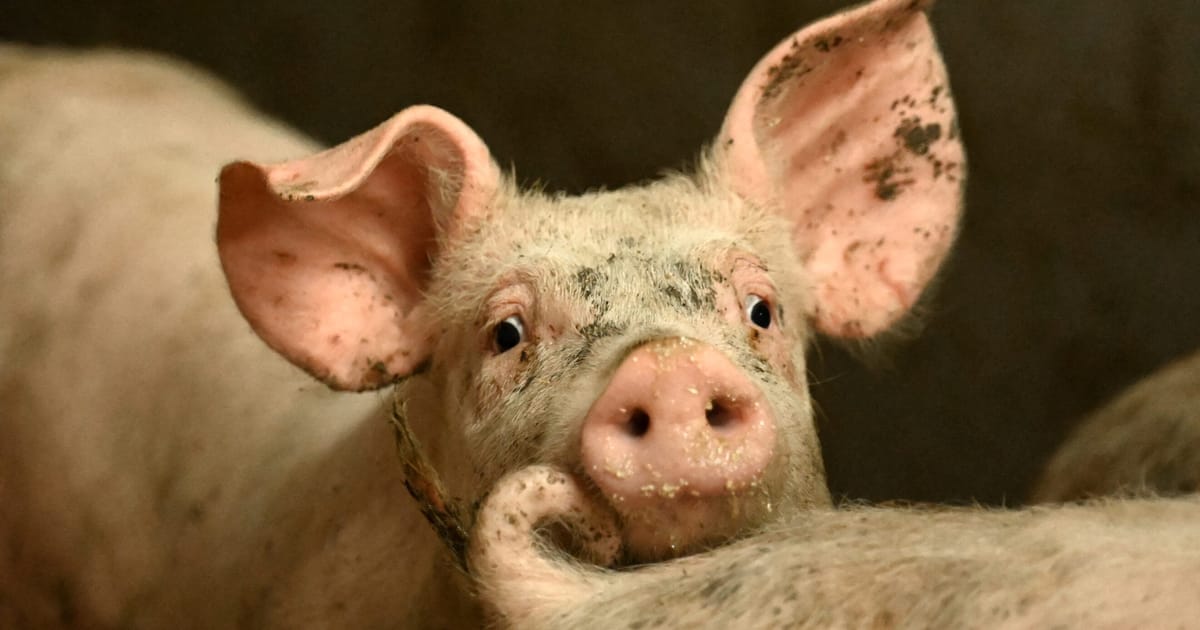Europe’s top pork-producing region is ground zero for intensive systems that devour scarce water and cause nitrate pollution.
In the region of Osona, to the north of Barcelona, there are seven times as many pigs as people.
Hectares of pig farms — long, barrack-like brick buildings with half-closed windows — stretch from the roadside into the distance. Metal cylinders containing tons of feed jut out from their sides. Huge pools store decomposing animal waste.
As you get closer, the stench of ammonia and squeals of thousands of pigs overwhelm your senses.
Osona is renowned for its fuet, a traditional Catalan pork sausage, and for its stunning mountains and nature reserves. But water in half of its fountains has stopped flowing, according to a citizens’ platform created to defend the River Ter that cuts through the region. And that’s not just because there is no rain.
“The pig sector’s consumption of water already exceeds that of people,” said the head of the platform, Ginesta Mary. They estimated that the 1 million pigs in the region consume as much water as almost 200,000 people. The census counts a population of just over 150,000.
But water consumption isn’t the only issue angering the pigs’ human neighbors.



This is the best summary I could come up with:
“Feces aren’t fertilizer, but a polluting agent,” Mary told POLITICO, calling for the number of pigs to be slashed by half to comply with the nitrate requirements.
But the worst drought in recent history — which has coincided with a proliferation of dry spells and devastating floods elsewhere in Europe — is exposing how Catalonia’s ambition to satisfy the world’s growing hunger for pork is pushing the region beyond the limits of what its environment can support.
Such multinationals require farmers to meet certain productivity targets — amount of feed; animal mortality; or the number of piglets per sow — in exchange for a stable income at the end of the month.
Marti Costal, from the Catalan organization of young farmers (JARC) owns apple trees, cereal crops and runs a farm with 1,100 pigs.
Batallé, one of the largest companies in the sector, referred a request for comment to Miguel Àngel Higuera, director of the Spanish Association of Pig Producers (Anprogapor).
“The few family businesses that have their own local market will survive, but the rest will go to the hands of big corporations — or will come from elsewhere,” said Costal, who was approaching retirement age despite being a member of the young farmers’ association.
The original article contains 1,834 words, the summary contains 206 words. Saved 89%. I’m a bot and I’m open source!